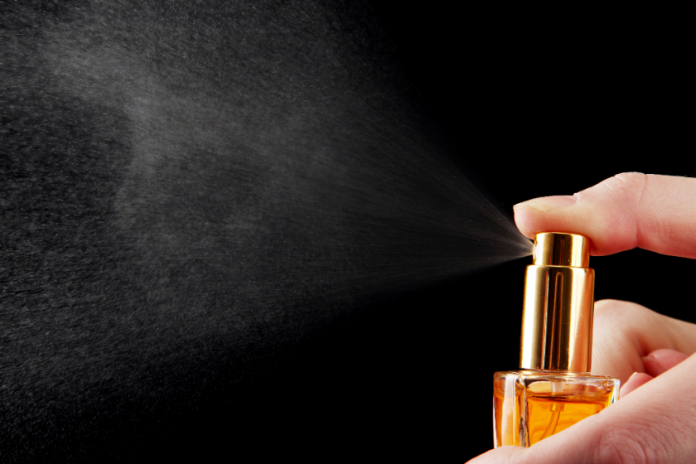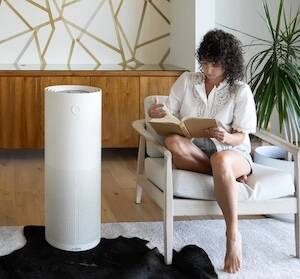
We’ve been talking a lot about fragrance lately, and we’ve found there’s a lot of confusion around this topic. Some wonder what the problems can be, others are curious about essential oils, and some just want to navigate the use of scent altogether. Made Safe has become an expert on fragrance after certifying hundreds of products, screening countless ingredients, and taking into account the latest science-so we’re excited to share what we know so you can make informed decisions and determine whether you want scent, what kind, and where to find it.
What Makes Fragrance So Tricky?
The word “fragrance” (aka “parfum”) is used as an umbrella term for a cocktail of natural essences and synthetic chemicals. Scent isn’t generally one ingredient, but can be as many as 100 ingredients combined. Companies are legally allowed to keep individual fragrance ingredients secret because they’re deemed “confidential business information,” or “trade secrets.”
The International Fragrance Association (IFRA), representing the world’s fragrance houses, has a published list of roughly 4,000 fragrance ingredients that lists chemicals and natural ingredients known to be used in fragrance. This is a helpful look into what goes into fragrance, but since fragrance ingredients aren’t required to be disclosed, consumers are still left guessing.
Read more about 4 Reasons Why Synthetic Fragrance Stinks
In short, without full ingredient transparency, there’s no way for shoppers to know what’s actually inside of these fragrance or perfume catch-alls found on labels and in products.
Toxic Chemicals Hiding in Fragrance
Unfortunately, many common fragrance ingredients can be toxic to human health. Phthalates have been linked to reproductive and developmental harm. Synthetic musks like galaxolide and tonalide, are potential endocrine disruptors that don’t break down in our bodies or the environment and are commonly found in blood and breast milk.
Other fragrance ingredients are parabens; although these are largely being phased out, common ones like methyl paraben and ethyl paraben are still found in products and are listed on Washington State’s Chemicals of High Concern to Children List. IFRA’s list also includes ingredients such as styrene (a carcinogen) and resorcinol (a known irritant and likely linked to endocrine disruption).
In addition to chemicals linked to human health harm, some common fragrance ingredients are allergens. While not everyone reacts to allergens, people who are sensitive to them have a right to know if they’re used in products so they can avoid them.
This is why, in addition to passing our screening process for ALL ingredients, sub-ingredients and so-called secret ingredients, MADE SAFE requires full ingredient transparency as part of certification so that shoppers can make the right choices for their own health.
Are Essential Oils a Safe Bet for Fragrance Lovers?
Essential oil (EO) use for many things, including scent, is on the rise. So are EOs the answer for all your fragrance needs?
Lets start with what they are. Essential oils are highly concentrated compounds derived from plant oils. At first glance, this may seem simple-but they are actually highly complex ingredients made up of many naturally-occurring subcomponents.
When intact as a whole extract, essential oils have been known to have incredible potency and beneficial properties when used properly (and should always be used according to manufacturers’ guidelines). Many plants themselves, and therefore essential oils, can contain some harmful ingredients if evaluated on their own. However, when approached and reviewed as a whole, they are considered safe for use when used properly. In fact, some researchers believe these harmful compounds may actually be part of what keeps a plant healthy in the wild. For the majority of people, naturally-derived essential oils (not oils derived from plants grown in a lab, but those that have evolved over time) contain many more powerful ingredients that promote health than they do ingredients that take away from it, including beneficial ingredients like antioxidants.
The extracts themselves can contain sub-ingredients that, for some people, may be allergenic, and which may make essential oils a poor choice for those people. However, for most individuals, the whole plant boosts overall health, as they contain beneficial ingredients like antioxidants.
Read more About 25 Ways to Use Essential Oils
Essential oils are pressed or steam-distilled from aromatic plants directly. This method for extraction, usually used in making skincare or therapeutic products, is non-chemical in nature. However, there are other ways to extract scent and aroma from plants. The strongest form is an absolute, which uses a chemical (often hexane) as a method for extraction and yields a higher-potency, longer-lasting scent, which makes this method more commonly used for perfumery. To make an absolute, one extracts with a chemical and yields a waxy substance often called a concrete. This can be used on its own or it can then be further extracted to yield the absolute. CO2 extraction methods are popular as they can be used for essential oils and absolutes without using a petrochemical process and occur at low temperatures, making them good for skincare and therapeutic use alike. Extracts can be pressed from plants after soaking in a base such as oil. It is important to know if things are added to extracts, such as preservatives or other additives.
Made Safe generally permits the use of essential oil ingredients for scent after we have vetted them through our process, although some of those essential oils may contain sub-ingredients which are allergens, because not everyone reacts to allergens.
Finding Safe Scent and Fragrance Free Products:
We know that while a lot of people like to find safer scents, there are just as many people who are sensitive to fragrance or would like to avoid it altogether. Which is why we’re excited to provide this list of MADE SAFE certified fragrance-free products! Sometimes you just want the assurance that a product doesn’t contain ANY fragrance or chemicals, which is why a third-party certification like MADE SAFE is helpful. All of our products contain ingredients that meet our strict standards.
[Editor's Note: We are proud that our sponsor Natracare was awarded the MADE SAFE certification.]




